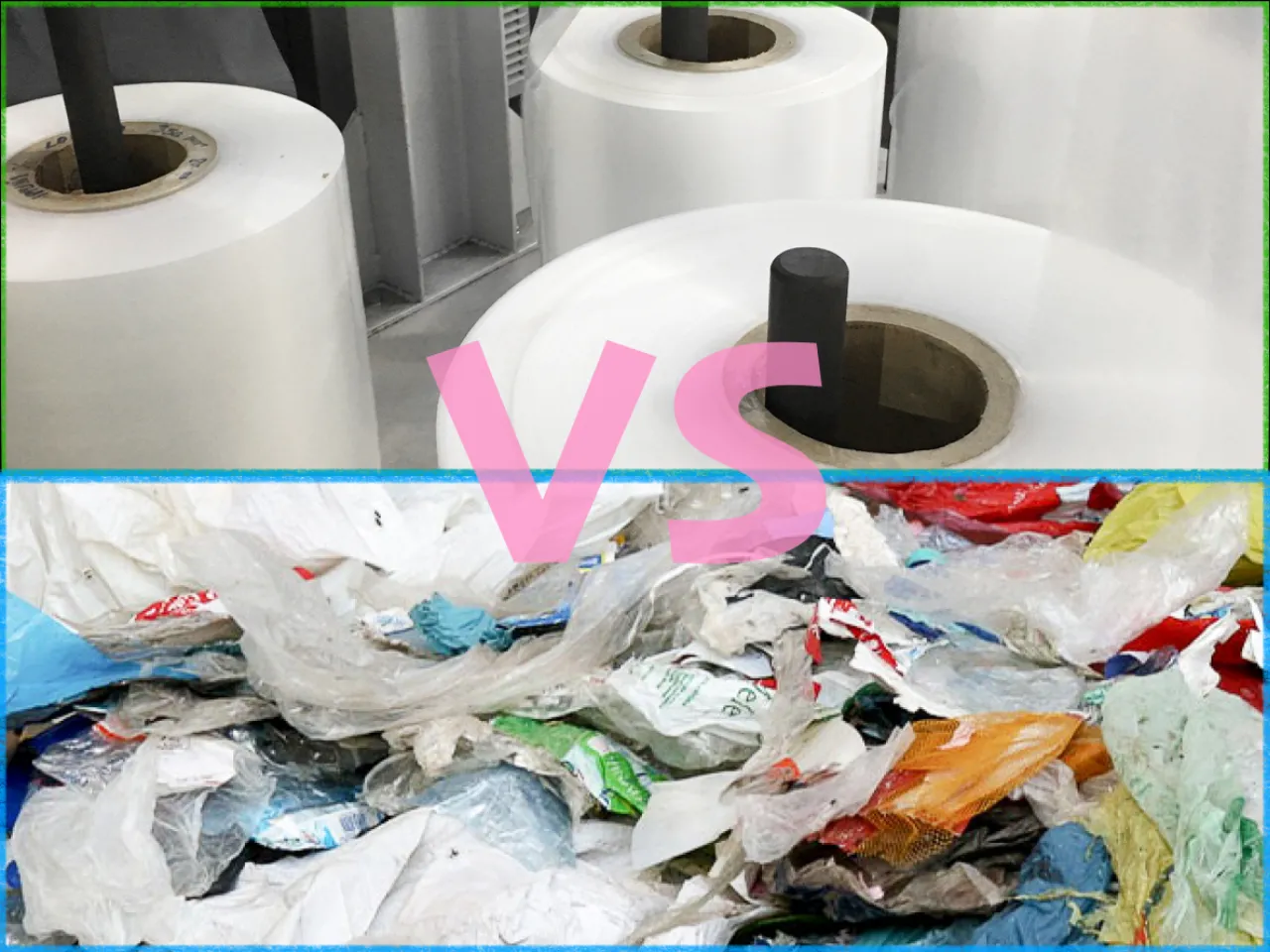Riciclaggio della plastica è una parte fondamentale della riduzione dei rifiuti e della conservazione delle risorse. Tuttavia, non tutti i rifiuti di plastica sono creati uguali. Due tipi principali di riciclaggio della plastica sono Postindustriale E Post-consumo. Sebbene entrambi mirino a riciclare la plastica e a ridurre i rifiuti in discarica, operano in condizioni e processi diversi. In questo articolo, esploreremo le differenze tra questi due metodi di riciclaggio e i loro vantaggi unici.
Che cosa è il post-industriale Riciclaggio della plastica?
Riciclaggio della plastica post-industriale si riferisce ai rifiuti di plastica generati durante il processo di fabbricazione di prodotti in plastica. Questi rifiuti sono spesso puliti, incontaminati da contaminanti e prodotti in grandi quantità. Per i produttori di plastica, riciclare i propri rifiuti non è solo una scelta ecologica, ma anche una strategia conveniente. Invece di inviare i rifiuti in discarica, i produttori possono riutilizzarli direttamente nelle loro linee di produzione.
Uno dei principali vantaggi di Riciclaggio post-industriale è che il materiale di scarto è controllato e omogeneo, rendendolo più facile da elaborare. Con le macchine per il riciclaggio di Rumtoo, i rifiuti plastici post-industriali possono essere reintrodotti nelle linee di produzione a una velocità fino a 100%, riducendo la necessità di nuove materie prime e abbassando i costi di produzione complessivi.
Che cosa è il post-consumo Riciclaggio della plastica?
Riciclaggio della plastica post-consumo si occupa di materie plastiche che sono già state utilizzate dai consumatori. Queste possono essere raccolte da famiglie, aziende o altri stabilimenti commerciali. Le materie plastiche post-consumo, note anche come PCR (riciclato post-consumo) materiali, vengono riciclati in nuovi prodotti, contribuendo così a chiudere il ciclo dell'uso della plastica. Tuttavia, il riciclaggio della plastica post-consumo è più complesso a causa di sfide come la contaminazione, la variabilità nei tipi di plastica e la necessità di una selezione estesa.
Prima del riciclaggio, Plastica post-consumo devono essere accuratamente puliti e suddivisi in categorie. Queste plastiche spesso richiedono una corda per stendere i contaminanti e un controllo dell'umidità per garantire che i pellet riciclati siano di qualità accettabile. La natura eterogenea delle plastiche post-consumo, che vanno dalle bottiglie alle borse, può rendere difficile ottenere la coerenza nel prodotto finale.
Principali differenze tra il riciclaggio post-industriale e post-consumo
- Fonte dei rifiuti di plastica:
- Postindustriale: Generato durante la produzione e solitamente non contaminato.
- Post-consumo: Raccolti dai consumatori dopo aver utilizzato il prodotto.
- Contaminazione e selezione:
- Postindustriale: La plastica è solitamente pulita e i tipi di rifiuti sono prevedibili.
- Post-consumo: I rifiuti devono essere separati in categorie, operazione che spesso comporta la pulizia per rimuovere sporcizia e umidità.
- Controllo sulla composizione della plastica:
- Postindustriale: I produttori conoscono esattamente il tipo di plastica che stanno riciclando, garantendo così la coerenza delle proprietà dei materiali.
- Post-consumo: La composizione delle materie plastiche può variare notevolmente, poiché provengono da vari prodotti di consumo e marchi.
- Complessità del processo di riciclaggio:
- Postindustriale: Meno complesso grazie al controllo dei materiali di scarto.
- Post-consumo: Più complesso, richiede passaggi aggiuntivi come la pulizia, la selezione e il controllo dell'umidità.
Vantaggi e sfide del riciclaggio post-consumo
Nonostante le sue complessità, Riciclaggio post-consumo offre notevoli benefici ambientali. Aiuta a ridurre i rifiuti in discarica, abbassa le emissioni di carbonio e conserva le risorse. Tuttavia, il processo può essere più costoso a causa del costo di selezione, pulizia e lavorazione. Tuttavia, aziende come Rumtoo hanno superato queste sfide sviluppando soluzioni di riciclaggio avanzate che semplificano il lavoro delle aziende nel riciclo della plastica post-consumo e nella produzione di prodotti sostenibili.
Conclusione
Che tu ti stia concentrando su Postindustriale O Post-consumo riciclaggio della plastica, comprendere le differenze è fondamentale per scegliere le attrezzature e i processi giusti. Il riciclaggio post-industriale tende a essere più semplice, con meno sfide e una maggiore consistenza dei materiali. D'altro canto, il riciclaggio post-consumo è più complicato ma offre notevoli ricompense ambientali. Con Di Rumtoo Grazie alla competenza in entrambi gli ambiti, le aziende possono gestire in modo efficiente entrambi i tipi di rifiuti plastici, diventando leader del settore in termini di sostenibilità.
Domande frequenti:
- Domanda 1: Qual è la differenza tra il riciclo della plastica postindustriale e post-consumo?
- Risposta 1: Il riciclaggio post-industriale riguarda i rifiuti di plastica generati durante la produzione, mentre il riciclaggio post-consumo riguarda le plastiche utilizzate dai consumatori. La differenza principale è la fonte e i livelli di contaminazione.
- D2: Il riciclaggio della plastica post-industriale è più efficiente del riciclaggio post-consumo?
- A2: Sì, il riciclaggio post-industriale tende a essere più efficiente poiché i rifiuti sono più puliti e i produttori possono controllare il tipo di plastica riciclata, mentre il riciclaggio post-consumo richiede una selezione e una pulizia approfondite.
- D3: Perché il riciclo della plastica post-consumo è più difficile?
- A3: Il riciclaggio della plastica post-consumo è complicato a causa della contaminazione da parte di vari prodotti, di tipologie di plastica non omogenee e della necessità di una selezione e pulizia approfondite.
- D4: In che modo Rumtoo supporta il riciclaggio post-consumo?
- A4: Rumtoo offre macchinari avanzati per il riciclaggio che aiutano a semplificare il processo di riciclaggio post-consumo, superando sfide come la contaminazione e migliorando l'efficienza.
- D5: La plastica post-consumo può essere riciclata in prodotti di alta qualità?
- A5: Sì, dopo un'adeguata pulizia, selezione e lavorazione, la plastica post-consumo può essere riciclata in prodotti di alta qualità adatti a vari settori industriali.



